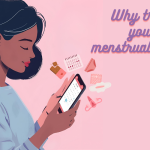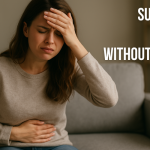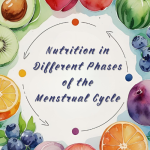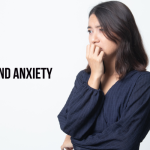
- 26.03.2025
- Knowledge Hub, Period Problems
Pain relief during periods is the first thing girls think about when menstruation is mentioned. Menstrual cramps are something almost every woman is familiar with. For some, it’s just a mild inconvenience that can be managed with a cup of tea, while for others, it’s a real ordeal: cramps in the lower abdomen, weakness, headaches, and sometimes even nausea or chills. Unpleasant symptoms can turn an ordinary day into a challenge, forcing you to cancel plans or just lie down, wishing it would all end soon. Many of us have grown used to enduring the pain, considering it an inevitable part of being a woman—but is it really? There are various ways to relieve period pain: some reach for the medicine cabinet right away, others brew warm drinks or place a heating pad on their stomach. But what actually works? We want to figure out why it hurts in the first place, which methods are truly effective, and when it’s time to stop playing the tough soldier and see a doctor. Let’s find out together how to make “those days” less burdensome and regain a sense of normalcy.
Before Reaching for Pain Relief During Periods, Let’s Explore the Causes of Pain
To understand how to deal with menstrual pain, we first need to figure out what causes it. Doctors call it dysmenorrhea, and it comes in two types: primary and secondary. Primary dysmenorrhea is when everything in the body is fine, but the pain still shows up like an uninvited guest. This happens because the uterus contracts to expel the endometrium—the inner lining that sheds every month. These contractions trigger prostaglandins—hormone-like substances the body produces during periods. The more prostaglandins there are, the stronger the cramps and the more noticeable the pain during periods. Typically, it starts a day before bleeding or on the first day and eases up after 2–3 days. This is the most common case for young girls whose cycles are still stabilizing or for women without serious health issues. Usually, the first periods begin in school—the stomach pulls so much that you just want to sit still and not move.
Secondary dysmenorrhea, on the other hand, is about health. Here, pain isn’t just a quirk of nature—it’s a signal that something’s wrong. For example, endometriosis—when endometrial cells grow where they shouldn’t, like on the ovaries, fallopian tubes, or even in the abdominal cavity—can make periods unbearable. Or a uterine fibroid—a benign tumor that presses and irritates everything around it. Pelvic inflammation, ovarian cysts, post-surgical adhesions, hormonal imbalances, or even a misplaced IUD can also be culprits. Hormones love to meddle: too much estrogen and too little progesterone can make the uterus contract more than necessary. Then there’s stress, lack of sleep, poor diet, or genetics—some women’s mothers or grandmothers also suffered every month. Knowing what’s behind the pain helps determine whether home remedies will suffice or if it’s time to get checked. It might be worth visiting a gynecologist to find out if it’s more complicated than it seems.
Is Pain Relief the First Thing to Grab for Pain?
When the pain becomes unbearable, most of us reach for the medicine cabinet. Pain relief during periods is like emergency aid: it quickly eases cramps and lets you get back to normal life. The most popular options are nonsteroidal anti-inflammatory drugs (NSAIDs): ibuprofen, naproxen, ketoprofen. They work simply—by blocking prostaglandins, which cause the uterus to contract so intensely. For example, ibuprofen is taken at 200–400 mg every 6–8 hours, but no more than 1200 mg per day. Relief comes within half an hour, and for 4–6 hours, you can forget about the pain. Naproxen lasts longer—up to 12 hours—and is taken at 250–500 mg twice a day, which is handy for long, busy days.
If the cramps aren’t too severe, acetaminophen (paracetamol) can do the trick. It doesn’t tackle inflammation but dulls the pain—500–1000 mg every 6 hours, with a daily max of 4000 mg. There are also antispasmodic pain relievers like No-Spa (drotaverine). They relax the uterine muscles and relieve tension—40–80 mg up to three times a day. Some girls prefer combination pills that include both a painkiller and an antispasmodic, like Spazmalgon or Baralgetas. Sometimes, No-Spa works if the stomach feels “clenched,” while ibuprofen is better for sharp, lingering pain. But all pain relievers have a catch: side effects. NSAIDs can upset the stomach—heartburn, heaviness, or worse if taken on an empty stomach. Antispasmodics might make you drowsy or dizzy. If you have ulcers, asthma, or liver problems, it’s best to ask a doctor which pills to take.
Choosing pain relief during periods depends on how bad the pain is. Mild discomfort? Acetaminophen will handle it. Strong cramps? Ibuprofen or No-Spa. The key is not to endlessly mask the pain—if it doesn’t go away, it’s better to check if everything’s okay.
Lifestyle Changes to Reduce Pain
Pain relief during periods with pills is great, but not everyone wants to rely on them every month, and they’re not always necessary. Sometimes, simple lifestyle changes help just as much—or even more. Start with food. Cut out salt, sugar, and coffee—fewer swelling, less bloating, and the discomfort isn’t as intense (this works especially well for PMS). Instead, add magnesium-rich foods—nuts, greens, dark chocolate (in moderation, of course). Omega-3s from fish or flaxseed oil also reduce inflammation. What about warm drinks? Chamomile tea, mint, or ginger with honey acts like a little heater for your stomach, calming and relaxing it. Sip chamomile at night, and you’ll sleep much better than without it.
Movement is another ally. No need to sign up for a marathon—light yoga, stretching, or a walk can really help. When you move, blood flows better, and endorphins—our natural painkillers—kick in. The “child’s pose” or reaching for the floor can ease the pulling sensation. But overdoing it with running or heavy workouts might make things worse, so keep it moderate. Stress messes everything up, too. When your nerves are shot, pain feels worse—blame cortisol. Try slow breathing, sitting quietly for 10 minutes, or playing a favorite song—it always lifts my mood.
Sleep is non-negotiable. Get 7–8 hours, and your body complains less. Cut back on smoking and alcohol—they constrict blood vessels and add to the spasms. And don’t forget heat: a heating pad on your stomach or a warm lavender bath is like an internal hug. These little things might seem trivial, but over time, they make a difference. When you drink less coffee, walk more, and use a heating pad, it really does get easier—sometimes even without pills.
When Should You See a Doctor?
Pain is normal up to a point. But if it’s so bad you can’t get up, lasts more than three days, or comes with extras like vomiting or dizziness, it’s time to see a doctor. It might not just be “heavy periods”—it could be something more serious. Endometriosis, cysts, or polyps love to hide behind intense pain. If your periods are delayed, come with clots, or are off-schedule, don’t wait. That’s how people find out about a cyst by getting an ultrasound in time.
If painkillers stop working or you’re popping them by the handful, that’s another red flag. A doctor might order an ultrasound, tests, or just suggest better ways to cope. Many delay too long and regret it later. Don’t be afraid to get checked—it’s about taking care of yourself.
So, Pain Relief During Periods or Not?
Menstrual pain isn’t something you have to just accept. Yes, almost everyone experiences it, but suffering through tears isn’t the only option. Pain relief during periods is about finding what works for you: pills, heat, walks, or a mix of them. Every body is unique, and there’s no one-size-fits-all solution, so it’s important to listen to yourself and find what truly helps. For example, try tracking your cycle and symptoms—it helps you better understand what’s happening and spot when something’s off; an app like Selin App can come in handy here, analyzing data and flagging potential issues. Experimenting and tailoring relief methods to yourself turns those days from a trial into a manageable part of life. The key is not to ignore how you feel but to seek comfortable solutions that make your period easier and calmer.














